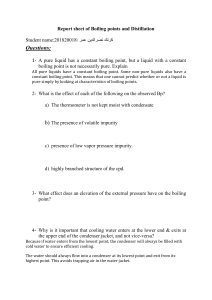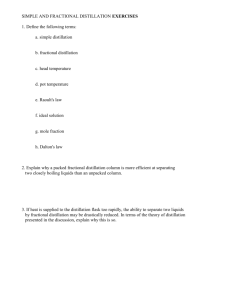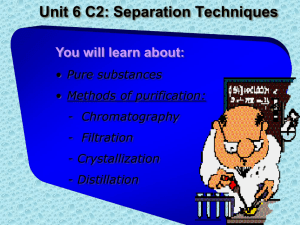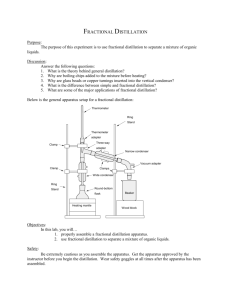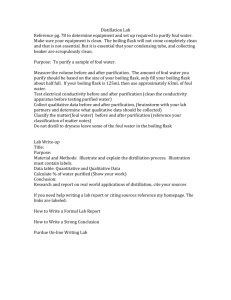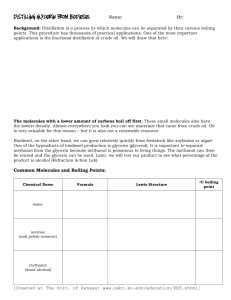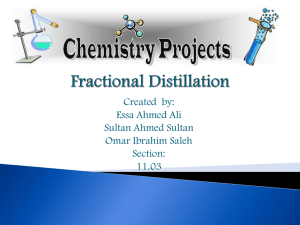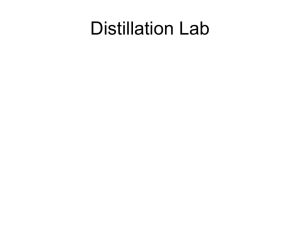Distillations Fractional of methanol water
advertisement
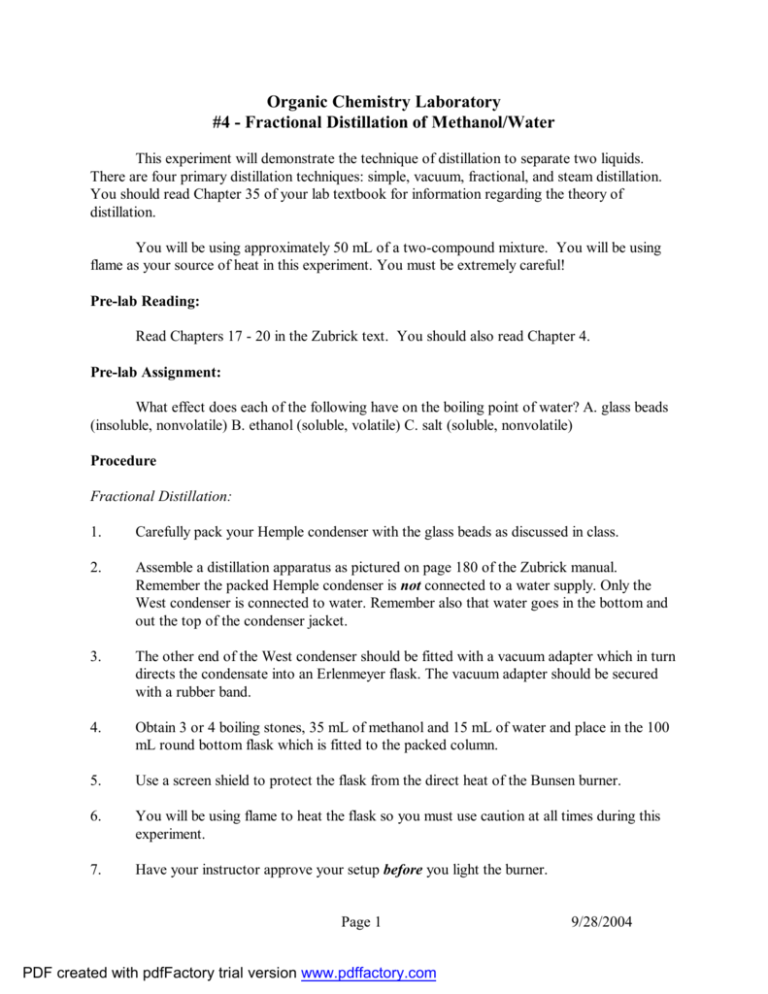
Organic Chemistry Laboratory #4 - Fractional Distillation of Methanol/Water This experiment will demonstrate the technique of distillation to separate two liquids. There are four primary distillation techniques: simple, vacuum, fractional, and steam distillation. You should read Chapter 35 of your lab textbook for information regarding the theory of distillation. You will be using approximately 50 mL of a two-compound mixture. You will be using flame as your source of heat in this experiment. You must be extremely careful! Pre-lab Reading: Read Chapters 17 - 20 in the Zubrick text. You should also read Chapter 4. Pre-lab Assignment: What effect does each of the following have on the boiling point of water? A. glass beads (insoluble, nonvolatile) B. ethanol (soluble, volatile) C. salt (soluble, nonvolatile) Procedure Fractional Distillation: 1. Carefully pack your Hemple condenser with the glass beads as discussed in class. 2. Assemble a distillation apparatus as pictured on page 180 of the Zubrick manual. Remember the packed Hemple condenser is not connected to a water supply. Only the West condenser is connected to water. Remember also that water goes in the bottom and out the top of the condenser jacket. 3. The other end of the West condenser should be fitted with a vacuum adapter which in turn directs the condensate into an Erlenmeyer flask. The vacuum adapter should be secured with a rubber band. 4. Obtain 3 or 4 boiling stones, 35 mL of methanol and 15 mL of water and place in the 100 mL round bottom flask which is fitted to the packed column. 5. Use a screen shield to protect the flask from the direct heat of the Bunsen burner. 6. You will be using flame to heat the flask so you must use caution at all times during this experiment. 7. Have your instructor approve your setup before you light the burner. Page 1 PDF created with pdfFactory trial version www.pdffactory.com 9/28/2004 8. Once approved carefully heat the flask containing the methanol/water mixture and collect the fraction that distills from 63 – 70 ºC. Collect a second fraction that distills from 70 – 95 ºC, and 2 or 3 mL of a third fraction that distills above 95 ºC. Turn the flame off once the third fraction is collected. Alternately, distill the mixture at a rate of about 1 or 2 drops per minute and record the temperature every 2 mL. Collect the lower boiling fraction, the period of rapid temperature rise and the high boiling fraction. Label these fractions appropriately. Plot temperature vs. volume of distillate. 9. Carefully measure the volume of each fraction and also the volume that remains in the boiling flask. Data and Observations: In your notebook you should record all data obtained during this lab. Record the pertinent physical properties of methanol and water. Report: You should include a copy of your plots and answer the following questions. Questions: 1. The normal boiling point of toluene is 110.6 °C. What is its vapor pressure at this temperature? 2. What effect does an increase in atmospheric pressure have on the boiling point of a liquid? A decrease? 3. If the rate of distillation through a packed column is too rapid, flooding occurs (liquid is forced up through the column). What effect does this have on the efficiency of the fractionation? 4. Explain the relation between accurate measurement of boiling point and the placement of the thermometer. 5. Give two reasons why the cooling water is run through the condenser from the bottom to the top. Page 2 PDF created with pdfFactory trial version www.pdffactory.com 9/28/2004

